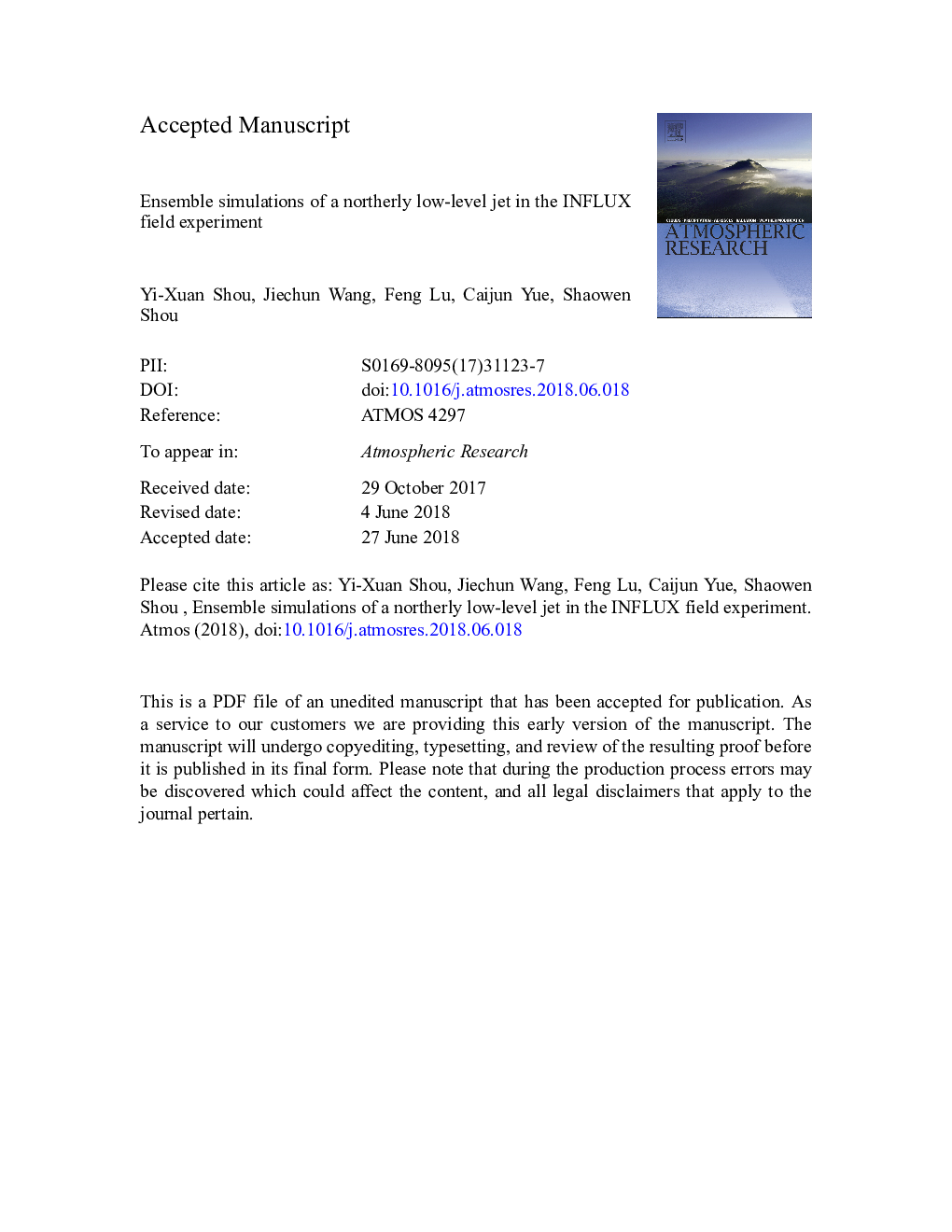| Article ID | Journal | Published Year | Pages | File Type |
|---|---|---|---|---|
| 8864533 | Atmospheric Research | 2018 | 48 Pages |
Abstract
The northerly low-level jets often occur in the Great Lakes region of the United States during the cold season. Usually, the jets are closely related to winter snowstorms, wildfire spreading and air pollution dispersion. However, our knowledge on the northerly low-level jets is quite limited. In this study, an ensemble simulated approach, which is based on the WRF-LETKF ensemble Kalman filter numerical prediction/data assimilation system, is used to investigate a northerly low-level jet (N-LLJ) occurred on 1st October 2014 over the state of Indiana during the INFLUX experiment. The simulations are carefully verified by using the Halo Streamline Doppler lidar Profiler data and flight observational datasets. Results show that, the ensemble simulations are more efficient to reproduce the N-LLJ than a single simulation. Based on the ensemble simulation results, the characteristics and mechanisms of the formation and evolution of the N-LLJ are further studied. It is shown that the N-LLJ exhibits typical meso-scale characteristics. Both the increased negative buoyancy and the thermal wind imbalance caused by synoptic frontogenesis are responsible for the formation of this N-LLJ. However, controlled by a shallow large scale system, this N-LLJ does not show significant diurnal cycles. Besides, the comparisons among the ensembles imply that the strength of the N-LLJ is closely related to the intensity of negative buoyancy and frontogenesis.
Related Topics
Physical Sciences and Engineering
Earth and Planetary Sciences
Atmospheric Science
Authors
Yi-Xuan Shou, Jiechun Wang, Feng Lu, Caijun Yue, Shaowen Shou,
